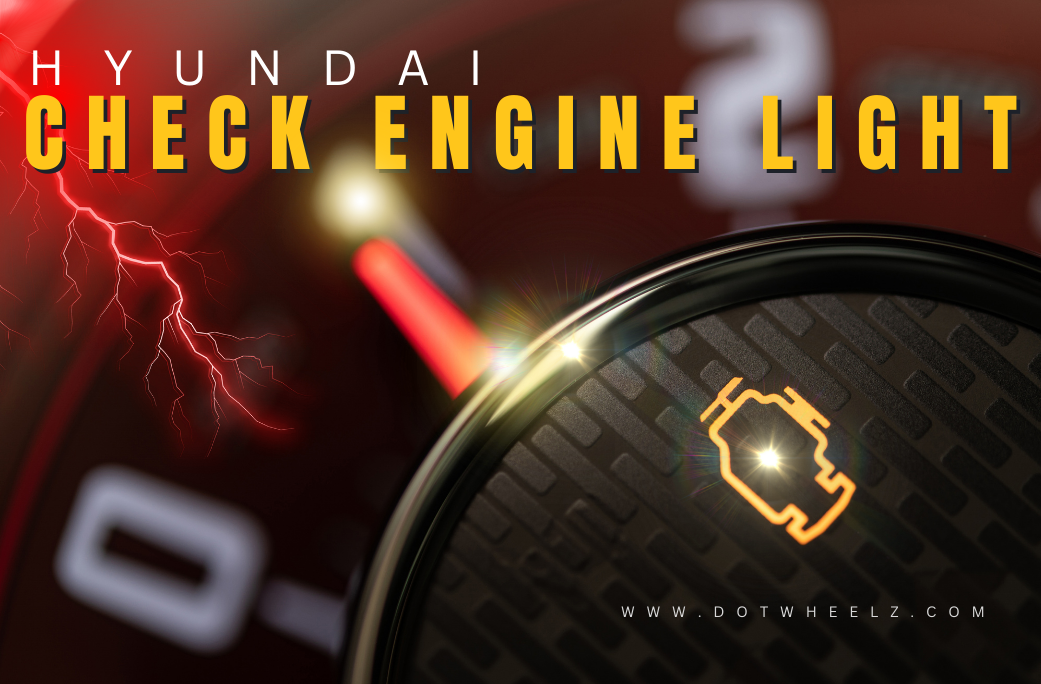Hyundai Check Engine Light Is On: Causes And Solutions


If the check engine light comes on in your Hyundai Elantra, Accent, Sonata, Kona, or Santa Fe, don’t worry. It can be unsettling, especially if you haven’t experienced it before. However, there are various reasons why this warning light may come on, some more concerning than others.
In this article, we will explain why your Hyundai check engine light is on and what you should do about it.
This can lead to issues such as misfires, low fuel efficiency, decreased performance, or even harm to the engine. A faulty MAF sensor can cause misfires, poor economy, and reduced performance, and may even damage the engine.
When your Hyundai’s check engine light comes on, it’s important to go to an authorized service center right away. Highly skilled technicians use advanced diagnostic equipment to quickly and effectively read OBD-II trouble codes.
When your car has a problem, the check engine light comes on. The car’s On-Board Diagnostics system creates a code to help figure out the problem. When your car has a problem, the check engine light turns on.
The car’s On-Board Diagnostics system generates a code to assist in identifying the issue. By using an OBD-II scanner, you can search our database for common trouble codes. This will give you an indication of what might be wrong with your car.
How your Hyundai’s check engine light reacts can provide important clues as to its cause and severity. To assist in making an informed decision about what should happen next, here are some scenarios we have outlined:
Hyundai drivers need to know that just clearing the check engine light won’t solve the problem. It’s important to find out what’s causing the issue and fix it promptly. Ignoring the problem can lead to more damage and may not meet performance and emissions regulations. Here’s how you can clear it:
Before you try to turn off the check engine light, it’s a good idea to find out what’s causing it. Before attempting to turn off the check engine light, it is advisable to determine the cause. One way to do this is by using an OBD-II scanner. This device can provide trouble codes that indicate the source of the problem and the specific issues triggering the light.
Once You Have Collected Trouble Codes: Once you’ve collected trouble codes, the next step should be addressing their underlying cause.
Certain parts like oxygen sensors, spark plugs, or catalytic converters may need to be repaired or replaced if they are damaged. This is necessary to prevent the check engine light from reappearing. It is crucial to deal with this issue promptly since it may worsen if ignored. It’s important to address this issue promptly, as it could worsen if left unresolved.
To clear a check engine light, disconnect your car’s battery after addressing the issue. Here’s how:
Before you leave the car, make sure the ignition is completely turned off and both keys are removed.
Disconnect Car Battery: Remove the negative battery terminal with a wrench or socket set to stop power flow and disconnect the battery’s source. This will eliminate its source.
Wait: for 15-30 minutes after removing the battery before reconnecting it to ensure all remaining power is drained from its systems.
Reconnect the Battery: After waiting a sufficient period, reconnect and tighten down the negative battery terminal securely.
Switch on the Ignition: To activate all vehicle systems by turning the ignition “On”, without starting up the engine. This will power all systems of your vehicle.
Verify the Light: To see if a problem is fixed, make sure the check engine light is off. If the light comes back on after being turned off, there may still be problems. In such cases, it is advisable to investigate and address these problems promptly.
Drive Your Hyundai: Take a brief test drive of your Hyundai to see if the engine light remains off. Keep in mind that it might take some time for the system to reset.
If you clear your check engine light, it will also delete any diagnostic trouble codes in your car’s computer. Clearing your check engine light will delete any diagnostic trouble codes in your car’s computer. It is important to fix the underlying problems quickly if there are professional diagnoses or emissions tests in your area. This will help you pass inspections and keep your vehicle healthy.